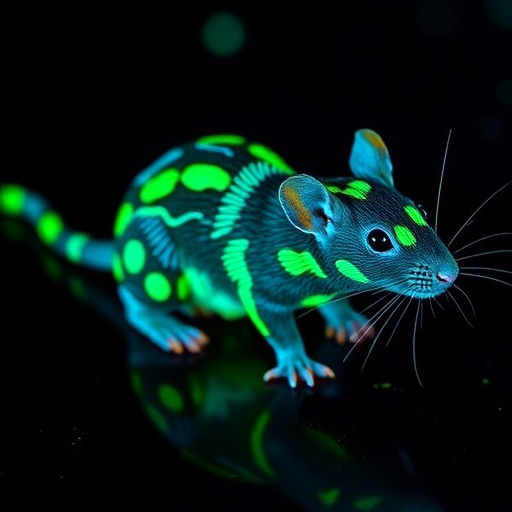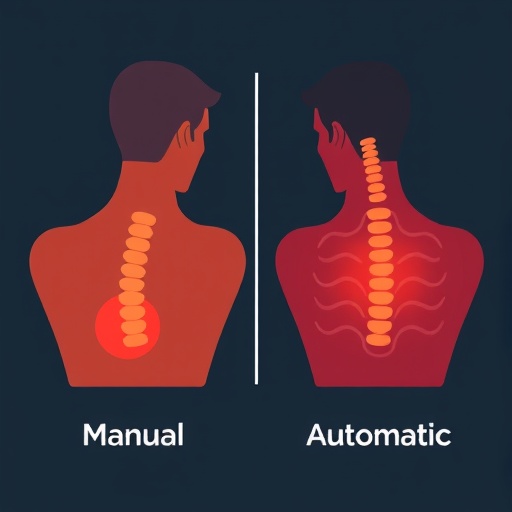In a groundbreaking advancement in Parkinson’s disease research, a team of scientists has developed and phenotypically characterized a novel rat model lacking the Atp13a2 gene, shedding new light on the molecular underpinnings of this complex neurodegenerative disorder. Parkinson’s disease (PD), marked by the progressive loss of dopaminergic neurons in the substantia nigra, continues to challenge researchers worldwide due to its multifaceted pathology and elusive mechanisms. The identification and functional analysis of the Atp13a2 knockout (KO) rat model represent a significant leap forward in unraveling the role of this gene in PD pathogenesis and offer a promising platform for therapeutic development.
Parkinson’s disease afflicts millions globally, characterized by motor symptoms such as bradykinesia, resting tremor, rigidity, and postural instability. These clinical features arise primarily from the degeneration of neurons responsible for producing dopamine, a critical neurotransmitter involved in movement control. Despite years of research, the precise genetic and molecular pathways driving neuronal downfall remain only partially understood. Among several genetic contributors, mutations in the ATP13A2 gene have been identified in familial cases presenting with early-onset parkinsonism and atypical symptoms.
The ATP13A2 gene encodes a lysosomal P-type ATPase implicated in cation transport and lysosomal function, critical to maintaining neuronal health by managing cellular waste and metal ion homeostasis. Mutations in ATP13A2 are known to cause Kufor-Rakeb syndrome, a rare hereditary form of PD with prominent neurodegeneration. However, the exact consequences of ATP13A2 deficiency in a living organism have not been extensively modeled, especially in species with closer physiological relevance to humans such as rats.
By generating an Atp13a2 knockout rat using cutting-edge CRISPR-Cas9 gene editing technology, researchers have engineered a biologically pertinent model that simulates the genetic deficit observed in human pathology. This model allows for comprehensive behavioral, histological, and biochemical assessments to flesh out the phenotypic repercussions of Atp13a2 loss. The results reveal that absence of functional Atp13a2 induces a spectrum of Parkinsonian-like traits, mirroring many features seen in human patients, thereby validating the model’s utility.
Behavioral examinations of the Atp13a2 KO rats uncovered disturbances consistent with Parkinson’s disease symptomatology. The mutant rats manifested progressive motor deficits, including reduced spontaneous movement, impaired coordination, and gait abnormalities. These phenotypic alterations escalated with age, paralleling the chronic nature of PD progression in humans. The pronounced motor dysfunction reinforces the gene’s crucial role in sustaining normal neural circuitry involved in motor control.
At a cellular level, detailed neuroanatomical analyses disclosed a significant degeneration of dopaminergic neurons within the substantia nigra pars compacta, the hallmark of Parkinson’s neuropathology. Immunohistochemical staining showed diminished expression of tyrosine hydroxylase – a key enzymatic marker for dopamine synthesis – underscoring the impact of Atp13a2 deletion on dopamine-producing cells. Moreover, increased gliosis indicated reactive inflammation, an additional factor contributing to neurodegeneration.
The study also delved into lysosomal and mitochondrial integrity, revealing that Atp13a2 deficiency impairs cellular organelle function, critical components implicated in PD. Lysosomal dysfunction was evident, aligning with the gene’s known role in lysosomal homeostasis, causing defective clearance of misfolded proteins and damaged organelles. This accumulation potentially triggers neurotoxicity and cell death pathways. Mitochondrial abnormalities further exacerbate cellular stress, compounding neuronal vulnerability.
Of particular interest was the examination of alpha-synuclein, a protein famously associated with Lewy bodies in PD. The Atp13a2 KO rats exhibited abnormal aggregations of alpha-synuclein within affected brain regions, reinforcing the link between Atp13a2 function and protein aggregation processes. This pathogenic cascade reflects a crucial aspect of PD etiology, providing new insights into how genetic mutations can perturb fundamental proteostasis mechanisms leading to neuronal demise.
In addition to central nervous system pathology, the model revealed systemic manifestations, including altered peripheral metabolism and immune responses. These findings underscore the multifactorial nature of Parkinson’s disease extending beyond the brain, opening avenues for holistic disease understanding and treatment development. The integrative phenotyping performed on this model establishes comprehensive groundwork for future studies dissecting the interplay between various systemic contributors to PD.
Importantly, this Atp13a2 knockout rat model offers a robust and reproducible platform for preclinical testing of novel therapeutics aimed at halting or reversing PD progression. Current treatments primarily address symptoms and fail to decelerate neurodegeneration. By closely mimicking human genetic and pathological features, this model enables targeted investigation of drugs designed to restore lysosomal function, mitigate alpha-synuclein pathology, or protect mitochondrial health—ultimately striving for disease-modifying therapies.
The relevance of this model extends to precision medicine as well. Understanding patient-specific genetic backgrounds and molecular pathways may tailor treatment strategies more effectively. The characterization of Atp13a2-deficient rats enriches the resource pool for studying gene-environment interactions, epigenetic modifications, and compensatory mechanisms, pivotal for identifying personalized markers and interventions.
In conclusion, establishing and characterizing the Atp13a2 knockout rat significantly advances the neurodegeneration field, bridging a crucial gap between genetic insights and translational research. By elucidating how ATP13A2 mutations drive Parkinsonian pathology, this study propels the scientific community closer to unraveling disease complexities and developing efficacious interventions. As Parkinson’s disease continues to impose a substantial burden on patients and healthcare systems worldwide, innovative models like this provide hope for breakthroughs that could change clinical landscapes.
The meticulous phenotypic profiling of Atp13a2 KO rats underlines the critical importance of lysosomal ATPases in neuronal survival and function, offering a fresh perspective on therapeutic targets in PD. Future explorations leveraging this model have the potential to unravel novel molecular players and pathways, fostering the emergence of next-generation neuroprotective agents. This pioneering research sets a new benchmark for genetic modeling of neurodegenerative diseases, underscoring the indispensable synergy between advanced gene-editing methodologies and comprehensive phenotypic analysis.
As the scientific community embraces such innovative models, there is optimism that unraveling the mysteries of Parkinson’s disease will accelerate, ultimately translating into tangible benefits for patients. Continuous interdisciplinary collaboration and integrative approaches will be key to harnessing the full potential of this Atp13a2-deficient rat model, spotlighting it as a transformative tool in the relentless quest to conquer Parkinson’s disease.
Subject of Research: Parkinson’s disease and the phenotypic characterization of an Atp13a2 knockout rat model.
Article Title: Phenotypic characterization of an Atp13a2 knockout rat model of Parkinson’s disease.
Article References:
Kinet, R., Sikora, J., Arotcarena, ML. et al. Phenotypic characterization of an Atp13a2 knockout rat model of Parkinson’s disease. npj Parkinsons Dis. 11, 321 (2025). https://doi.org/10.1038/s41531-025-01171-0
Tags: ATP13A2 gene functionAtp13a2 knockout rat modeldopaminergic neuron lossfamilial early-onset parkinsonismgenetic contributors to Parkinson’slysosomal P-type ATPase rolemolecular pathways in Parkinson’s diseaseneurodegenerative disorder mechanismsneuronal health and cation transportParkinson’s disease motor symptomsParkinson’s disease research advancementstherapeutic development for Parkinson’s





